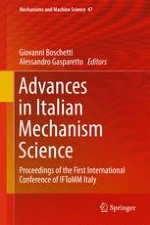2017 | OriginalPaper | Buchkapitel
On the Use of Cable-Driven Robots in Early Inpatient Stroke Rehabilitation
verfasst von : G. Rosati, S. Masiero, A. Rossi
Erschienen in: Advances in Italian Mechanism Science
Aktivieren Sie unsere intelligente Suche, um passende Fachinhalte oder Patente zu finden.
Wählen Sie Textabschnitte aus um mit Künstlicher Intelligenz passenden Patente zu finden. powered by
Markieren Sie Textabschnitte, um KI-gestützt weitere passende Inhalte zu finden. powered by
